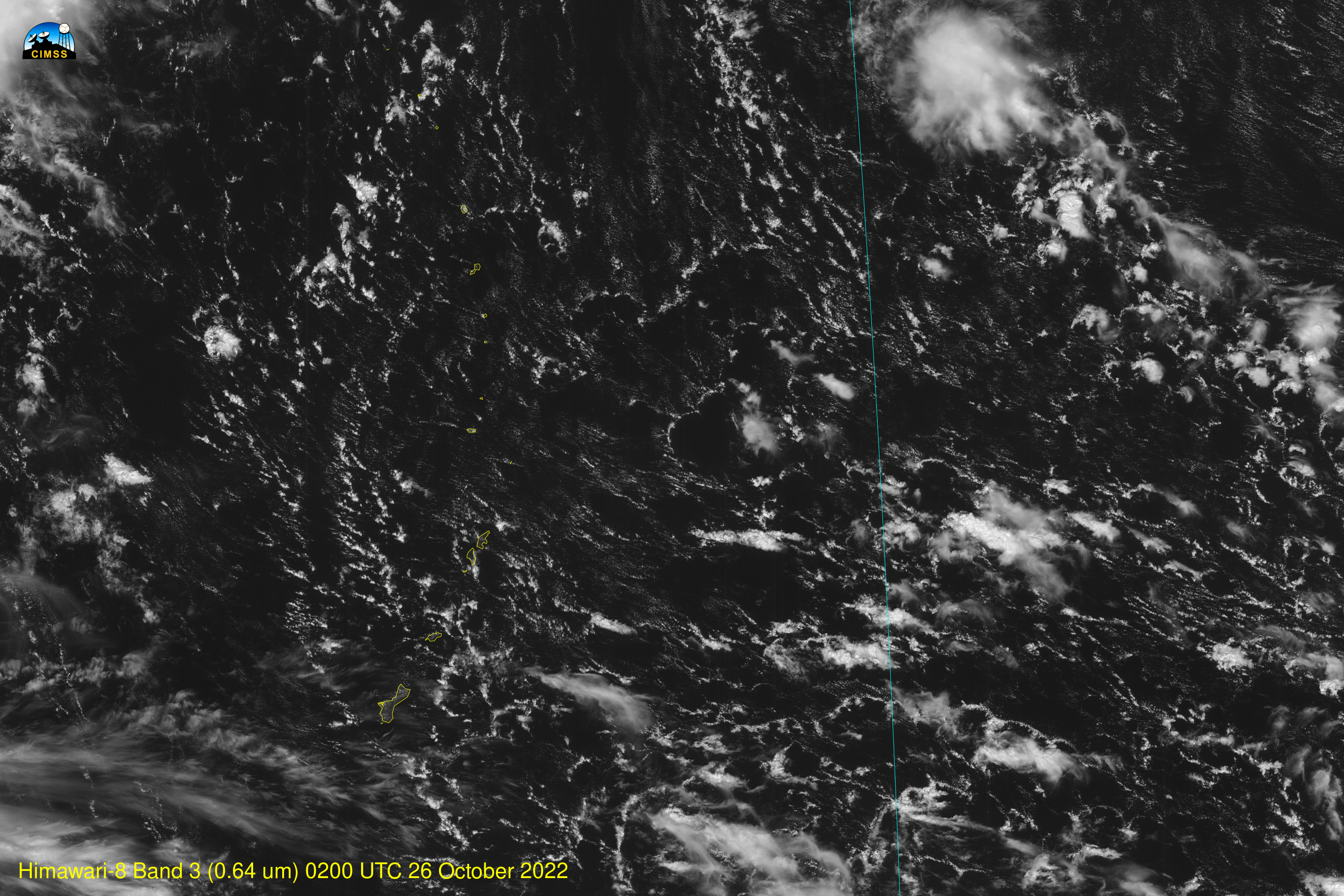
[ Archive ]

 |
CIMSS-NOAA Weekly Report [ Archive ] |
 |
CIMSS AND ASPB WEEKLY HIGHLIGHTS FOR THE WEEK ENDING OCTOBER 28, 2022
DATA, INFORMATION, AND USE-INSPIRED SCIENCE:
FUTURE OUTLOOK:
AWARDS AND RECOGNITION:
TRAVEL AND MEETINGS:
TRAINING AND EDUCATION:
MEDIA INTERACTIONS AND REQUESTS:
SOCIAL MEDIA AND BLOG Posts:
SSEC and CIMSS Scientists in the News: Scientists at the University of Wisconsin-Madison (UW) Space Science and Engineering Center (SSEC) and the Cooperative Institute for Meteorological Satellite Studies (CIMSS) provide expert interviews, imagery and case studies to promote science. This week:
 (Click image to enlarge)
(Click image to enlarge)
Figure: A comparison of Japanese Meteorological Agency's Himawari-8 Visible Imagery and Himawari-8 and Himawari-9 Day Convection RGB imagery near Guam on Oct. 26, 2022 in a region without much intense convection. Read more at the CIMSS Satellite Blog: https://cimss.ssec.wisc.edu/satellite-blog/archives/48499. Credit: CIMSS, JMA.
 (Click image to enlarge)
(Click image to enlarge)
Figure: GOES-16 Dust RGB images, with and without plots of hourly surface observations, showed dust plumes in the Central Plains ahead of a cold front on Oct. 23, 2022. Read more at the CIMSS Satellite Blog: https://cimss.ssec.wisc.edu/satellite-blog/archives/48474. Credit: CIMSS, NOAA.
PUBLICATIONS:
Arctic basin-wide sea ice thickness retrieval paper published: A paper titled "A simple model for daily basin-wide thermodynamic sea ice thickness growth retrieval" by James Anheuser (CIMSS), Yinghui Liu (STAR), and Jeff Key (STAR), has been published in The Cryosphere. The focus of this paper is to develop a retrieval method for estimating thermodynamic sea ice thickness growth from space by linking a thermodynamic sea ice energy balance relation known as Stefan's law and retrieved snow–ice interface temperature from passive microwave satellite data. The paper is available at https://tc.copernicus.org/articles/16/4403/2022/. Citation: Anheuser, J., Liu, Y., and Key, J. R.: A simple model for daily basin-wide thermodynamic sea ice thickness growth retrieval, The Cryosphere, 16, 4403–4421, https://doi.org/10.5194/tc-16-4403-2022, 2022. (J. Anheuser, CIMSS; Y. Liu, E/RA2, 608-890-1893, yinghui.liu@noaa.gov; J. Key, E/RA2, 608-263-2605, jeff.key@noaa.gov)
OTHER:
| Archived Weeklies Page | Submit a report item |